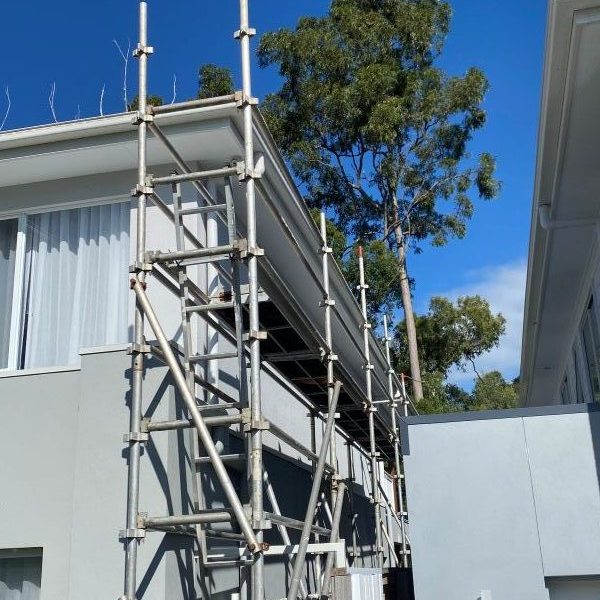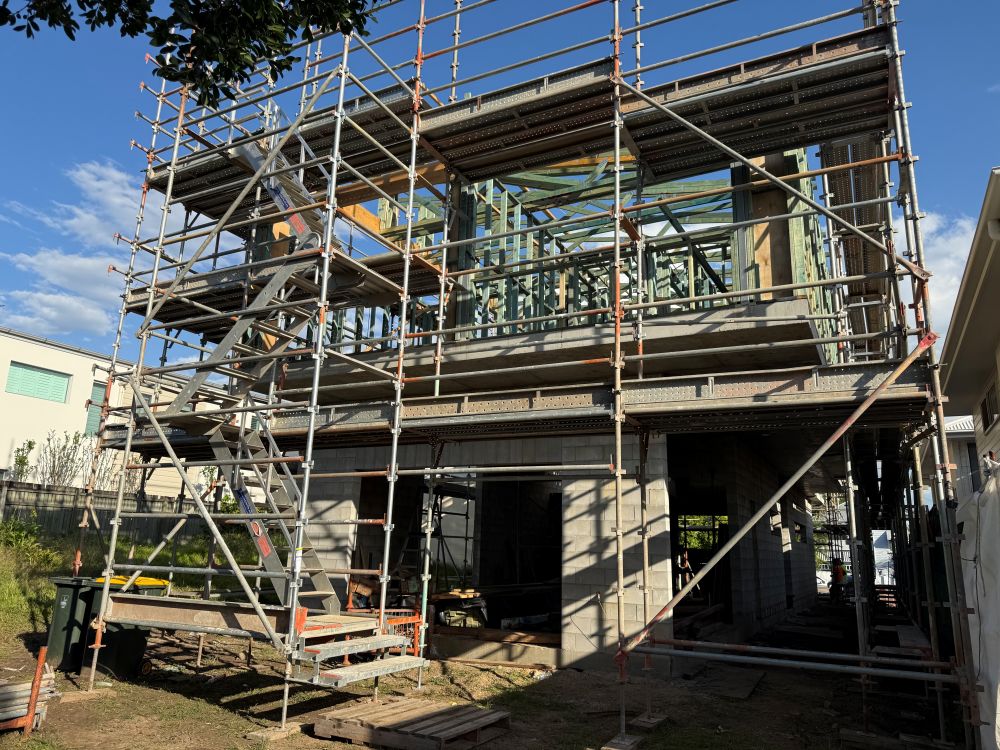Essential Strategies for Enhancing Scaffold Load Capacity: Key Safety and Compliance Insights for Construction Professionals
The term scaffold load capacity refers to the maximum weight that a scaffold can safely handle during various construction activities. This critical concept encompasses three primary categories of loads that require careful evaluation:
- The weight of the scaffold itself, commonly known as the dead load
- The weight of personnel, tools, and materials placed on the scaffold, referred to as the live load
- External forces such as wind, rain, or vibrations impacting the structure, categorized as environmental load
Grasping these load categories is vital, as they directly affect the total stress exerted on a scaffold during its operational phase. Adhering to these load calculations is not only prudent but mandated by Australian law, which aims to protect the safety of all individuals involved in construction projects.

Comprehensive Step-by-Step Instructions for Effectively Using Our Scaffold Load and Height Calculator
While there is no universal formula that suits every scaffold configuration, our scaffold calculator offers a straightforward method for obtaining precise estimates by simplifying significant variables. This tool is designed specifically for residential builders, homeowners, and scaffold hire experts who adhere to the standards established by Australian OHS regulations.
Step 1: Select the Type of Work
Begin by identifying the type of work, which could encompass activities such as roof restoration, exterior painting, solar panel installation, cladding, or rendering.
Step 2: Indicate the Number of Workers
For example, you might specify two workers who will be operating concurrently on the scaffold platform.
Step 3: Assess the Weight of Materials
This might involve estimating around 120 kg worth of rendering materials or tools that will be necessary for the project.
Step 4: Input the Height of the Platform
For instance, the platform height could be set at 4.5 metres above ground level.
After entering this information, the calculator will provide a recommended scaffold configuration that includes:
- The appropriate duty class (e.g., Light, Medium, or Heavy)
- An estimate of the Safe Working Load (SWL) per bay
- The recommended type of scaffold (e.g., aluminium tower or steel frame)
- Essential safety features required (such as guardrails, soleplates, and stabilisers)
- Any compliance triggers related to height (e.g., tie-offs required above 4 metres)
Understanding the Reasons Behind the Absence of a Universal Load Formula for Scaffolding
<pAlthough our scaffold calculator serves as a valuable tool for generating estimates, scaffolders and engineers do not depend solely on a single formula for their calculations. This is due to several important considerations:
- Scaffold systems can differ significantly based on materials and design (including aluminium, steel, modular, and tube-and-coupler)
- The specific application greatly impacts the load capacity (for example, painting versus masonry)
- Various manufacturers offer different platform strength and component ratings, leading to variances in load capacity
Standardized Methodology for Calculating Safe Working Load (SWL)
Industry professionals frequently utilize the following formula as a fundamental guide for estimating:
Safe Working Load (SWL) per bay = (Platform Load Rating × Safety Factor) – Scaffold Component Weight
Illustrative Example:
- A platform rated for a maximum load of 600 kg
- Applying a 4:1 safety margin: utilizing only 25% of the rating provides 150 kg
- Subtracting the weight of the scaffold structure, which is 100 kg
- The resulting usable working load is 50 kg (this figure is a conservative estimate and typically does not reflect actual planning)
Due to the complexities presented by real-world conditions, professional scaffolders generally adhere to manufacturer guidelines, engineering tables, and local codes instead of relying solely on this simplified formula.

Professional Best Practices for Scaffold Evaluations: Ensuring Safety and Compliance
When conducting scaffold evaluations, professionals typically follow several critical components to ensure thorough assessments:
- Reviewing manufacturer load data and confirmed span ratings for accuracy and reliability
- Calculating the total live, dead, and environmental loads to ensure the utmost safety
- Ensuring adherence to AS/NZS duty class specifications to comply with industry standards
- Securing engineering sign-off for any custom or elevated scaffold configurations
- Conducting comprehensive visual and structural inspections prior to scaffold use to identify potential hazards and risks
Tailoring Scaffold Practices to Environmental Conditions and Specific Site Factors
Addressing Wind Exposure in Coastal Queensland
In areas classified under wind zones N3 and N4, the lateral forces affecting scaffolds can be significantly increased. Consequently, it becomes imperative to secure scaffolds at shorter intervals, and additional bracing or shade cloth may be required, especially during high-wind seasons, to ensure adequate stability and safety.
Considerations for Soil and Ground Types
In situations involving unstable or sloped soil conditions, it is crucial to utilize soleplates and adjustable base jacks to enhance scaffold stability. Furthermore, sites with varying elevations might necessitate the use of levelled bay systems to maintain a safe and secure working environment for all personnel.
Regulatory Requirements for Work Above Four Metres
In Queensland, any platform exceeding four metres in height must undergo a thorough inspection and certification process. A scaffold handover certificate is mandated under the Work Health and Safety Regulation 2011, ensuring that all safety standards and compliance regulations are strictly followed.
Essential Safety Regulations to Follow in Scaffold Operations
- Work Health and Safety Regulation 2011 (QLD)
- Managing the Risk of Falls at Workplaces (Code of Practice, 2021)
- AS/NZS 1576 and AS/NZS 4576 Standards for scaffold safety and operational guidelines
- High Risk Work Licence (HRWL) is necessary for any scaffold setup exceeding four metres in height
Site supervisors bear the responsibility for conducting regular inspections, particularly following adverse weather conditions or when there are substantial changes to scaffold height or load, ensuring continuous compliance with all safety regulations.
Insightful Practical Case Study: Scaffold Application in Robina
In a recent undertaking in Gold Coast, a homeowner in Robina required scaffolding to effectively repaint and render a two-storey exterior wall. The target working height for this project was established at five metres, and two tradespeople utilized approximately 200 kg of rendering materials and tools throughout the duration of the project.
Using our scaffold calculator, the suggested configuration was as follows:
- Scaffold class: Medium Duty, appropriate for the tasks at hand
- System type: Steel frame equipped with timber planks for enhanced durability
- Additional safety measures: Comprehensive edge protection, soleplates to accommodate soft earth conditions, and wind mesh to minimize wind exposure
The scaffold successfully passed all necessary inspections and complied with Queensland’s OHS regulations, resulting in no downtime throughout the entirety of the project.
Critical Considerations Regarding Scaffold Height and Load Capacity Calculations
Determining scaffold height and load capacity should never be approached as mere guesswork. In residential projects, this meticulous process is vital for ensuring safety, managing costs effectively, and achieving compliance with local regulations.
Given the specific requirements applicable to Australian conditions, especially in southeast Queensland, we strongly recommend obtaining an accurate scaffolding quote and ensuring that all installations are conducted by qualified professionals.
Reach Out to CanDo Scaffolding Hire for Expert Guidance and Comprehensive Services
For additional information regarding our extensive range of services, please feel free to contact us at 1300 226 336 or send an email to [email protected] at your convenience.
We provide a diverse array of scaffolding solutions, including void protection platforms and roof edge protection, tailored to accommodate the specific needs of any residential or light commercial construction project.
Understanding Scaffold Load Capacity for Residential Projects
The Article: Scaffold Load Capacity Insights for Residential Projects first appeared on https://writebuff.com
The Article Scaffold Load Capacity for Residential Construction Projects Was Found On https://limitsofstrategy.com


Your breakdown of scaffold load capacity is crucial for understanding safety protocols in construction, particularly as compliance with Australian law hinges on these distinctions. It’s interesting to note how often the ‘dead load’ is overlooked compared to live loads. Many workers focus heavily on the materials and personnel they’re placing on the scaffold but underestimate how much the scaffold’s structural integrity is influenced by its own weight.